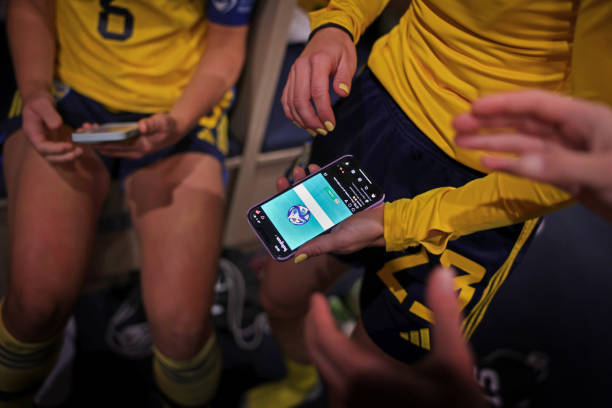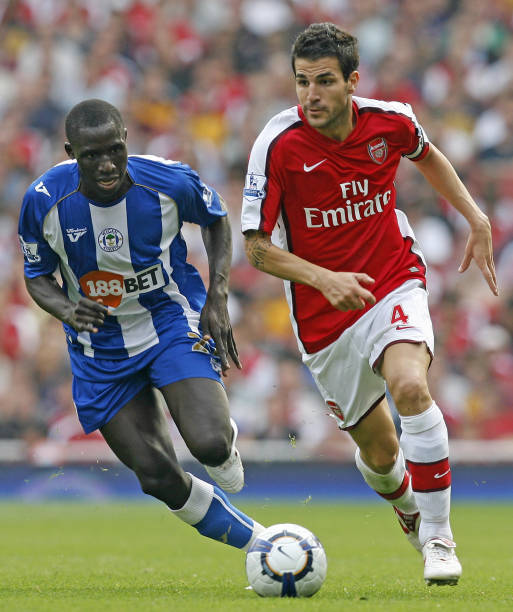
Introduction
Technology has significantly transformed football, revolutionizing the way the game is played, officiated, analyzed, and consumed by fans worldwide. From goal-line technology to data analytics and VAR (Video Assistant Referee), technological advancements have reshaped football into a more precise and engaging sport.
In this article, we explore the key areas where technology has made a significant impact on football, examining its benefits and potential drawbacks.
1. Goal-Line Technology (GLT)
One of the earliest and most impactful technological advancements in football is Goal-Line Technology (GLT). Introduced to eliminate controversial goal decisions, GLT uses high-speed cameras or magnetic sensors to detect whether the ball has completely crossed the goal line.
How It Works:
- The system uses multiple high-speed cameras positioned around the stadium.
- A central computer processes the images and determines if the ball has crossed the line.
- The referee receives an instant signal on their smartwatch, ensuring quick and accurate decisions.
Impact:
- Eliminated “ghost goals,” ensuring fairness.
- Reduced arguments between players and officials.
- Increased the integrity of the game by minimizing human errors.

2. Video Assistant Referee (VAR)
VAR has been one of the most controversial yet influential technological advancements in football. It was introduced to assist referees in making critical decisions regarding goals, penalties, red cards, and mistaken identity.
How It Works:
- A team of referees monitors the game from a separate control room.
- VAR reviews decisions in four key areas: goals, penalty incidents, direct red cards, and mistaken identity.
- The head referee consults a pitch-side monitor before making a final decision.

Impact:
- Reduced the number of incorrect refereeing decisions.
- Enhanced fairness and transparency.
- Increased delays and interruptions, sparking debates about its effect on the game’s flow.
3. Wearable Technology & Player Tracking
Modern football has embraced wearable technology to monitor player fitness, performance, and injury prevention. Teams use GPS trackers, heart rate monitors, and accelerometers to gain valuable insights.

How It Works:
- Players wear tracking devices during training and matches.
- These devices collect data on speed, distance covered, acceleration, and heart rate.
- Coaches use this data to assess player workload and prevent injuries.
Impact:
- Improved player fitness and reduced injury risks.
- Provided real-time performance analysis.
- Allowed managers to make data-driven tactical decisions.
4. Data Analytics & Artificial Intelligence (AI)
Football clubs increasingly use data analytics and AI to gain a competitive edge. These tools provide insights into player performance, opposition analysis, and tactical strategies.
How It Works:
- AI processes large datasets, analyzing passes, tackles, and movement patterns.
- Coaches use predictive analytics to assess player fatigue and injury risks.
- AI-driven scouting tools identify emerging talents worldwide.
Impact:
- Revolutionized scouting and recruitment.
- Enabled personalized training programs for players.
- Provided deeper tactical insights for teams and analysts.
5. Smart Footballs & Sensor Technology
Football manufacturers have integrated sensors into balls to enhance accuracy in decision-making and training.
How It Works:
- Embedded microchips track speed, spin, and trajectory.
- Connected with tracking systems to provide real-time data.
- Used in training to improve shooting and passing precision.
Impact:
- Improved accuracy in officiating.
- Provided detailed feedback for player development.
- Enhanced fan engagement with interactive match data.
6. Fan Experience & Broadcasting
Technology has also transformed how fans experience football, from high-definition broadcasts to virtual reality (VR) and augmented reality (AR).
Key Innovations:
- VAR Cam: Allows broadcasters to show in-depth replays of VAR decisions.
- Virtual Reality (VR): Provides immersive matchday experiences for remote fans.
- Augmented Reality (AR): Enhances match stats and live insights during games.
- 5G & Streaming: Faster internet speeds enable high-quality live streaming with minimal lag.
Impact:
- Fans have access to real-time stats and analysis.
- Enhanced viewing experience with multiple camera angles.
- Increased global reach of football through live streaming services.
7. Social Media & Digital Engagement
Social media platforms like Twitter, Instagram, and TikTok have changed how clubs, players, and fans interact.
Key Innovations:
- Instant match updates and highlights.
- Behind-the-scenes content from players and clubs.
- Fan engagement through live Q&A sessions and polls.
Impact:
- Allowed clubs to build a global fanbase.
- Enabled fans to interact directly with players.
- Increased football’s digital presence and commercial opportunities.
SUGGESTED FOR YOU
8 Richest Football Clubs & How They Spend Their Money – A Deep Dive
English Football’s 10 Greatest Ever Teams – A Deep Dive into Legendary Clubs
8. eSports & Virtual Football
With the rise of eSports and virtual football, video games like FIFA and eFootball have gained massive followings.
Key Innovations:
- Professional footballers participate in virtual tournaments.
- Clubs invest in eSports teams to engage younger audiences.
- Virtual training simulations for players using gaming technology.
Impact:
- Expanded football’s global audience.
- Created new revenue streams for clubs and players.
- Bridged the gap between real-life football and gaming culture.
Conclusion
Technology has undeniably reshaped football, enhancing the sport’s accuracy, performance analysis, fan engagement, and overall experience. While some innovations, such as VAR, continue to spark debate, there’s no denying that technology has brought increased fairness and efficiency to the game.
As technology continues to evolve, football will keep adapting, offering a blend of tradition and modernity. The future promises even more advancements, ensuring that the beautiful game remains dynamic and captivating for generations to come.









